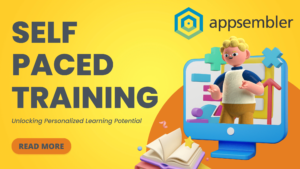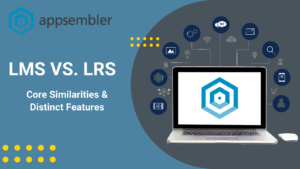If you want to successfully introduce a new product to the market, or increase your product’s awareness and adoption within technical audiences, you need to do more than just capture their attention. You need a powerful product marketing plan.
Successfully marketing your product to technical users and developers requires you to think and do things differently. You need to understand what your product’s technical audience needs and use strategic positioning and messaging to get on their radar. Staying on their radar and increasing their product usage is also a whole other ball game.
Follow the steps below to find out how to create a successful product marketing plan for technical users and developers.
Step 1: Gain a technical understanding of your product
If you’re marketing your product to a technical audience (i.e. technical marketing), you need to know its features and capabilities like the back of your hand. Technical buyers don’t want to hear about your product’s general benefits, such as a boost in return on investment; they want to know how your product works. This should also include answering questions, such as:
- What problem does your product solve?
- What differentiates your product from its competitors?
- Why should someone use your product?
Rather than reading about your product, you need to use it yourself so you can understand what it can do and who would benefit from using it. And while you don’t need to have all the answers when you have conversations with technical buyers, if you can’t explain how features work or point them to the relevant documentation, then you’ll lose credibility.
Step 2: Define your product’s targeted technical audience
Your product won’t be right for all developers or technical users. So, instead of spending time and money targeting the wrong people who might trial your product but drop off when they realize it doesn’t solve their problem, work out the specific technical audience(s) who will benefit from your product.
To do this, carry out market research so you can find out which subsections of your technical audience need your product. Look at who your competitors are targeting. If you have other products, survey those users to see who would be interested in your new product. Check out who has been complaining about your pain points on social media. Visit developer communities and read the conversations they’re having about the problem your product solves, your competitors’ products, and your products.
When you have this information, you can then create buyer personas that detail the characteristics of your ideal buyer, as well as what tools, techniques, channels, tone, and language you’ll use when talking to them. This will enable you to create content and campaigns that resonate with them.
Step 3: Set your product marketing goals
If you’re marketing to a technical audience, then your goals will be different and your marketing campaigns will also look different. Instead of direct-selling paid versions of your product, the goal is to make technical audiences aware of the problem that your product solves and to get them to try and use it.
These goals should be focused on measuring:
- Awareness, such as social media mentions, subscribers, and email newsletter sign-ups
- Adoption, such as how many applications and integrations are being built on your product,
- Engagement, such as how often are users using your product and how many features are they using
- Community, such as the number of product groups and meetings
- Satisfaction, such as your Net Promoter Score (NPS)
Step 4: Create tailored content and documentation for your targeted audiences
Now that you’ve defined your audience and set your goals, you need to use that information to create content that is tailored to your technical audiences, addresses their pain points, and positions your product accordingly. This content also needs to be engaging enough to hook your audience when they’ve never heard of your company, to bring your product’s value proposition to life, and educate them about your product’s features, the problems it solves, and common use cases that other buyers use your product for.
Instead of taking a one-size-fits-all approach, your content should include personalized learning paths that are tailored around specific roles, product features, career paths, programming language, use cases, or level of experience.
Step 5: Set up a dedicated technical zone on your website
Instead of adding your product marketing content to the same area of your website as the rest of your content, you need to create a dedicated zone that speaks the language of technical audiences. The type of content that resonates with your technical audience will differ from other types of marketing content and the general tone of your website (that’s why it needs its own zone).
This technical zone can include technical blog posts and tutorials, but should also house your product documentation, self-paced courses, and sample code.
Step 6. Provide interactive product experiences
Technical audiences want to learn about your product by trying it out, not by reading about it or watching a video. Instead of static demos, they need interactive learning experiences and a frictionless version of your product. Your audience will want to use your product in real-world scenarios to see if it will solve the problems they currently face.
A software sandbox provides a frictionless environment (no installation necessary, pre-configured at launch, and pre-populated with data) where you can create a personalized, cloud-based learning environment that launches with the click of a button. And since these environments are highly customizable, you can customize them according to your technical users’ seniority, the type of problem they’re working on, or around a feature you want to highlight.
Step 7: Build a community around your product
When you’re targeting a technical audience, keep in mind that they often choose products based on recommendations from their peers. To convert people from being occasional users into brand advocates who tell other people about your product, you need to build a community around your product.
To build this community, host in-person and online events to get users together and create spaces where they can share tips with peers and answer questions from other users. And when you’re just starting, answer forum questions directly, especially in the forums where your target audience hangs out. Take part in technical conversations and add value as product experts so you can gain trust and build a reputation for prioritizing their needs.
Revise and Review Your Plan Regularly
Your product marketing plan shouldn’t be static. As you develop and update your product, make sure you do the same with your plan, and communicate this to your users. If you add new features, you might find yourself with a new (or different) target audience. Or your goals might shift as you gain more traction with users.
As you’re targeting technical users with your product marketing initiatives and programs you won’t achieve results overnight. Remember to build in more lead time to track data and measure results.



